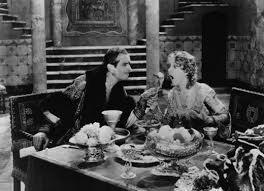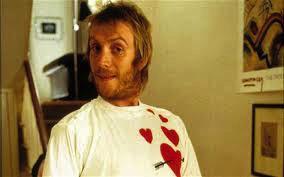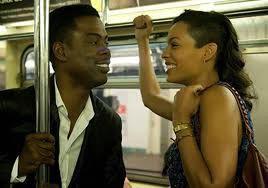Can lovers ever really be fools? Can fools really lose themselves in romantic love? The lover and the fool are comic literary archetypes, but they are funny in very different ways. Lovers in romantic comedies typically exhibit buffoonish humor; these movies are funny at the expense of their protagonists. We think their counter-times and missed messages are humorous for the clumsiness and coincidence they reveal, but the characters do not “know” that their experiences seem funny. Hugh Grant’s romantic anxieties must be genuine anxieties for his character in order to be funny to his audience. Even Shakespeare’s Kate from The Taming of the Shrew must be sincere in her impetuousness for her audience, guided by a humorous theatrical interpretation, to find them outrageous and funny. But she is never laughing—her position is quite the opposite of amused, in fact.

Douglas Fairbanks and Mary Pickford in The Taming of the Shrew (1929)
The fool seems different. Fools know they are speaking in wit and riddle, and they are disinterested players without a personal stake in the interpersonal dramas before them. Shakespearean fools are often androgynous; they do not meddle, at least with any personal agenda, in human passions. King Lear’s fool makes the crudest, even the most scathing jokes, yet he is “boy” to Lear, and sometimes he is even played by the same actress who portrays Lear’s daughter Cordelia.
Hamlet has a touch of the fool; in fact, the court jester Yoric is one of the only personalities he respects in the play. I have sometimes wondered if the impossibility of his relationship with Ophelia has to do with his changing role from lover to fool. It seems he cannot be both at the same time. If the courtiers think Hamlet’s out of his mind, then they cannot at the same time think he is fit to marry Cordelia. As a fool he is somehow ineligible for romantic courtship.
Can there ever be a fool-type presence in romantic comedies? For a moment I wondered if the protagonist’s best friend or neighbor might embody the fool. I had in mind Rhys Ifans’s in Notting Hill, but he too is a buffoon as opposed to a knowing riddler, and he too eventually finds love.

Rhys Ifans in Notting Hill (1999)
Actually, the traditional fool bears a closer resemblance to the stand-up comedian, who is part court jester, part truth speaker, and in those respects the stand-up comedian is a derivative of the Shakespearean fool archetype. Although the stand-up comic’s jokes extend to areas of sexual life that no one else will touch, the comic often also mocks or cynically rejects his or her own romantic prospects. Louis C.K.’s brash jokes about his wife are in some sense a testament to this. When the wife became ex-wife, the jokes seemed more shocking in retrospect. But is it too much to say that the unattached comedian was then freed to become an even more disinterested player? Maybe.
Some stand-up comedians (Steve Martin, Michael Keaton, and Bill Murray come to mind) explore the lover’s role with success, but this only works if they change hats. It seems the lover cannot know that he is the one telling jokes; he must become the joke. He must surrender to the humiliating experience of being in love. One exception might be Groundhog Day (1993), where only the protagonist and the audience understand why this courtship through repetition is funny; and Murray’s lover-protagonist is not sure, until late in the film, that he wants to cultivate any lasting personal ties.
Traditionally, the court jester is in but not of society. It is his detached stance in the drama of life that gives the fool license to say things no one else can say. He must genuinely appear to have nothing to gain and nothing to lose.
When the stand-up comedian stays court jester and also tries to be the lover, the results are confusing—but interesting. Consider Chris Rock’s Top Five, which contains some of Rock’s most experimental and wild tangents into the sexually outrageous (I was reminded of a Laurence Sterne novel) as well as some of the rom-com genre’s more stilted courtship moments. The film represents vibrant new terrain for Rock, but it does not leave one feeling confidant that the stand-up comedian can seamlessly hop from comedy stage to lover’s lair.
Yet Rock’s new genre within the romantic comedy genre could represent a broadening shift for the fool. Unlike Hamlet, Rock’s protagonist is presented with a love interest, Rosario Dawson, who prizes the fool over the lover. In turn, Rock’s languishing stand-up comedian character finds new inspiration through love. It is a transition in progress to be sure, but perhaps these once distinct archetypes are merging into a single character. Perhaps the lover is becoming a little savvier and the fool just a little more tender.

Chris Rock and Rosario Dawson in Top Five (2014)
